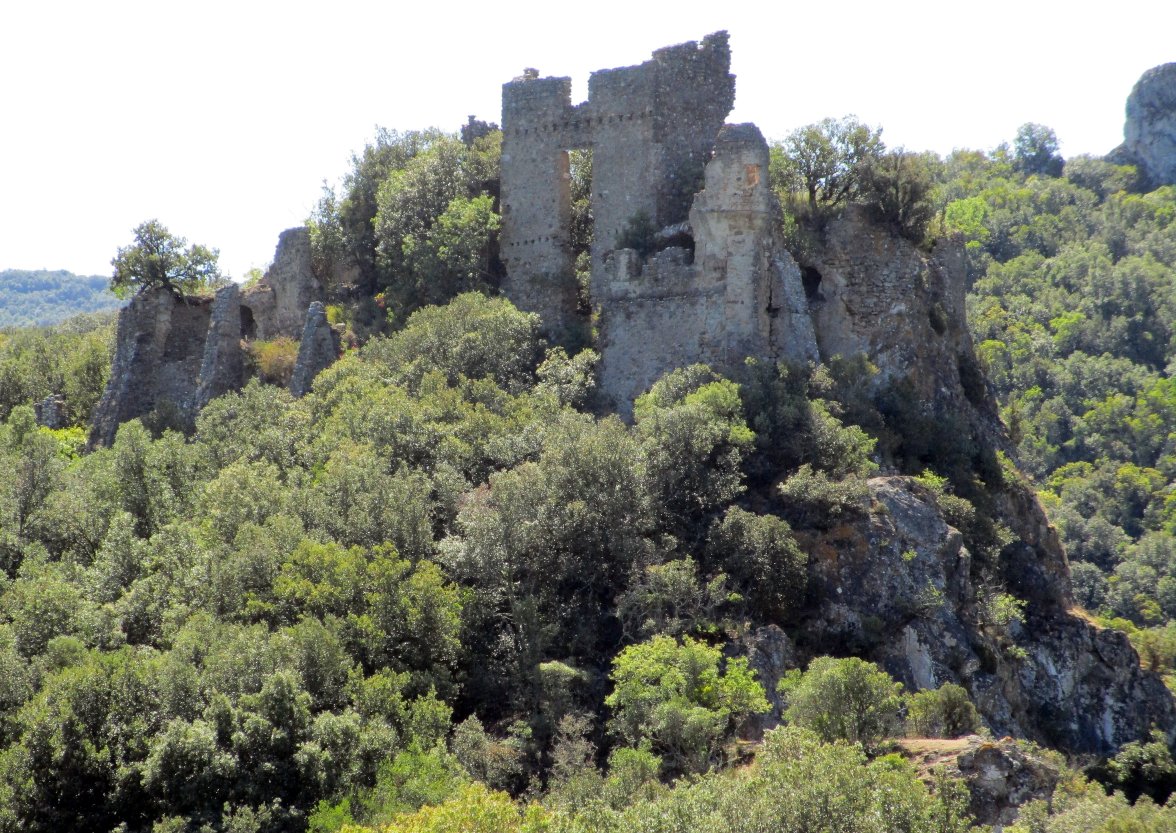Durfort

Description
The castle ruins, surrounded on three sides by the River Orbieu, wander
across the summit of the hill. To the SE lies an apparently
separate D shaped tower. Just west of this is an elongated
D shaped tower, similar to the towers at Ewloe and Castel y Bere in
Wales as well as nearby Peyrepertuse. A large ward to the north connects this with the
summit of the hill where there is a rectangular ward with internal
buildings butting up against the curtain. This has one round
tower to the NW. The entrance must have been to the NE, but
the whole is now heavily wooded and has been closed to the public due
to the unstable state of the ruins.
Why not join me here and at other French
castles? Information on this and other tours can be found at Scholarly
Sojourns.
Copyright©2019
Paul Martin Remfry

